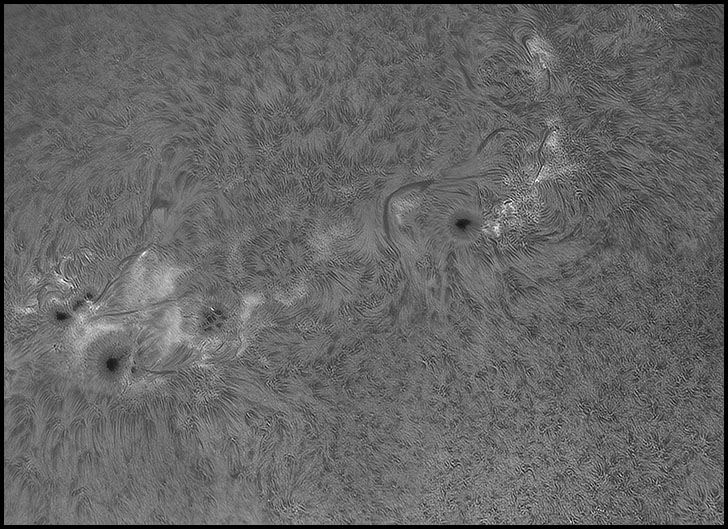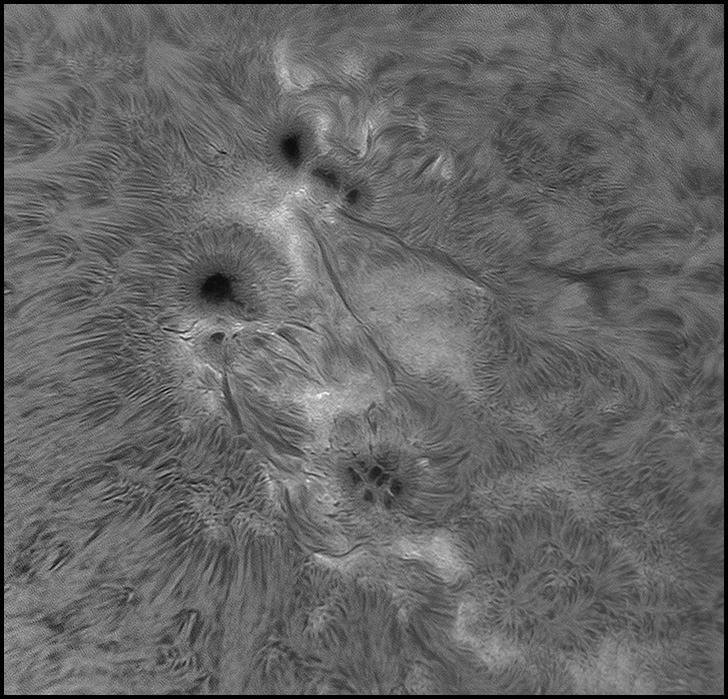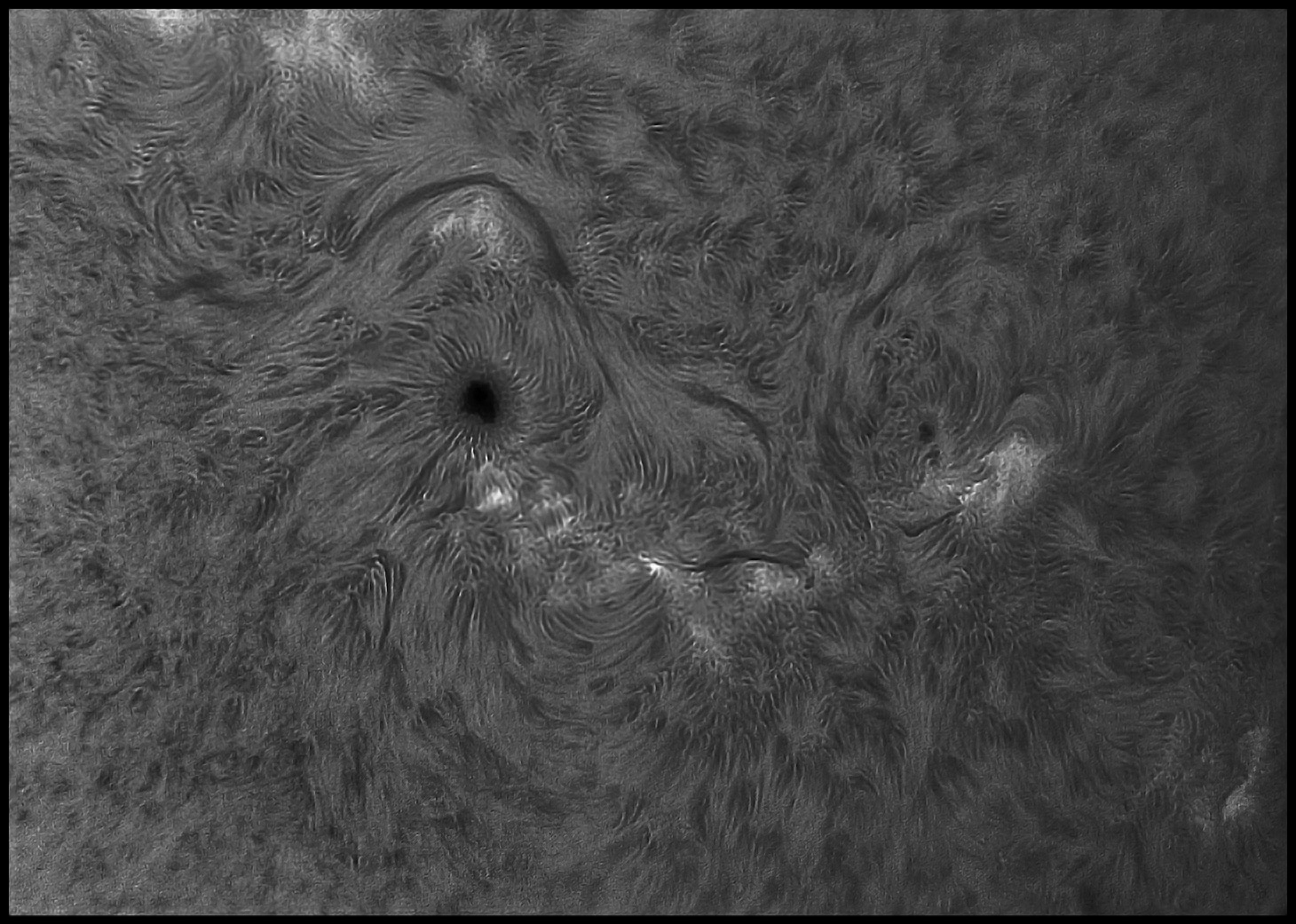And the Sun goes wild!
04/23/2022. The most active Sun of the current cycle coincided with a morning of excellent seeing. I dusted off the Toughbook, the Frankenscope and ASI178MM, the LXd55, and the lithium battery. Everything worked great. I even got decent full-frame photos using the flatfielding routines in the capture software. That said, the ROI frames were better.

That's a six-panel mosaic using the best 250 of 1,000 frames and an ROI of 2400x2000 pixels. The best photo of the day came from the best 1,000 frames of 3,000 using the same ROI. The workflow described on the previous page worked nicely. Lucky imaging is intended to defeat seeing, but it works even better when there is no struggle:

Down below is the first image of the day, all the pixels from the ASI178MM, the Panatomic-X of CMOS cameras (or at least the Plus-X -- dinosaurs will know what I am saying). This is the best 250 of 1,000 frames:

Yeah, sure. Click 'em to make 'em big. I spent 132GB making them. That's about a dozen weddings.